Photo: Rob Simmons
Spy vs. Spy.
Bizarro and Superman.
Wario and Mario (or, for obscurity’s sake, Dark Samus and Samus Aran).
Jesse Marsch and Jim Curtin.
The team who is (New York) and the team who would like to be (Philadelphia) squared off in the cauldron that was Red Bull Arena Saturday night. For one night at least, said square off ended all square. A nil-nil scoreline unexpectedly left the visitors feeling unsatisfied and the home side thankful for any point at all.
Analysis
Everything you can do, I can do better / I can do anything better than you
No, you can’t! / Yes, I can!
Philadelphia Union head coach Jim Curtin is an old friend of Red Bull head coach, Jesse Marsch. Their friendship began on the field, as the two shared a locker room as players in Chicago and Chivas USA. It’s grown from there to an obvious and outright derivative coaching philosophy: play the kids, press the other team, and pounce on mistakes.
The kids
In all Red were homegrown players such as Tyler Adams, Sean Davis, and Alex Muyl. In Blue, Austin Trusty, Mark McKenzie, and Keegan Rosenberry. Adams has international pedigree and will be patrolling the midfield in Red Bull red and American white and blue for years to come. Trusty, in nearly equal measure, seems poised to take the mantle of vocal, intimidating Union defenders from the likes of Danny Califf and Carlos Valdez.
Red Bull raised the bar and the Union came up to meet it, and few other teams in Major League Soccer (FC Dallas included) are playing young players at the same clip as these two are.
The press and the pounce

A wider press, eliminating the obvious central and wide passes, but allowing for a lumped ball forward
The New York press often looked like hands intertwined Saturday night. Daniel Royer, Bradley Wright-Phillips, and Florian Valot would position themselves in each of the defensive channels between the four Union defenders (or four defenders and a dropped Haris Medunjanin) as the young Union tried to pass it out of the back. That strategy effectively eliminated any easy passes to the fullbacks.
When the ball did get wide, though, the press also eliminated Keegan Rosenberry’s trademark release valve: under duress from his man and from the attacker pressing behind him, this pass is one that skips the right Center Back and goes diagonally between defenders to the left Center Back. It’s effective, and wasn’t available at all on Saturday.
Furthermore, any time a Union midfielder flashed into the vacated space this particular press created, he was trailed at a full sprint by a Red Bull defender.
There were no easy passes, other than the lumped balls forward the Red Bulls were happy to concede (they almost always ended in a turnover). In trying to pass or dribble out of the back instead, the Union defense had more than their share of turnovers in their own third that could have ended in goals. Kaku’s curler and Wright-Phillip’s near-post daisy cutter were both first half chances that directly came from a turnover.
The parry
The Union press isn’t quite the same as Red Bulls’, using C.J. Sapong to try and follow the opposition’s first pass and cut the field in half. Then, a collapsing midfield can outnumber the ball side and affect the same press-pounce-parry maneuver. Jim Curtin has been extremely forward in describing his intentions on the Union’s website and Adam Cann had been even more thorough in breaking the strategy down on this site and now that one. Truthfully, Philadelphia is slower at the final stage of this tactic right now, but effectuated the first two stages with aplomb on Saturday.
(The Union chase checking attackers just like their adversaire rouges, too, and Keegan Rosenberry can be seen in the frame below having just finished chasing Daniel Royer halfway up the field and back, never letting him turn.)
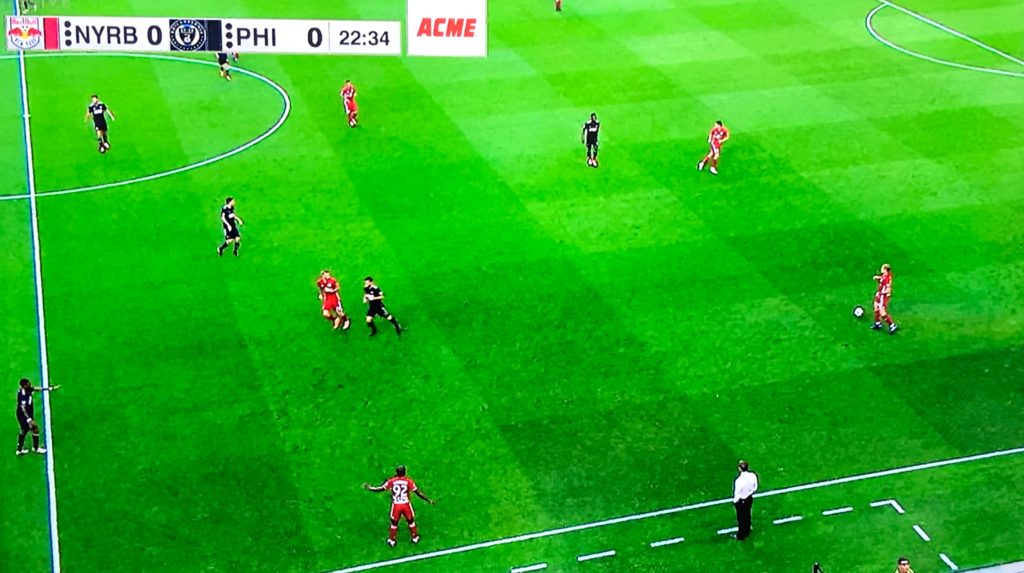
Cutting the field in half, making sure the extra man can’t turn
Tactically, this counterattack preference is probably a function of the strengths of the players more than anything else (Sapong is certainly not as fast or as cunning as Wright-Phillips, and Medujanin has skills on the green but is far more effective as a long-drive specialist). Conversely, rather than receive the ball off of a turnover and immediately turn upfield, the Union’s preferred strategy was to win it, make a forward-looking pass to force Red Bulls to chase a man and lose shape, then quickly shuttle it back to Haris Medunjanin… allowing him enough time to reach down, pick up some grass, hold said grass at arm’s length (but near eye level) so that he might drop it and gauge the subtlety of the crosswinds, select his Pitching Wedge, then pick up his head, squint slightly into the Harrison New Jersey sunset, put his head back down and exhale with the cool sounds of an ocean’s waves, then swing smoothly, calmly, and effortlessly, letting the ball do the work of course, and find Marcus Epps by himself, piña colada in hand, alone in front of goal for the chance of the night.
Though the image below didn’t result from Union press, but rather Ray Gaddis and the Union breaking the Red Bulls down, the end result of both is paramount to the Union strategy and looks something like this (and this is, in fact, how much space Medujanin had to find Epps on the aforementioned chance).
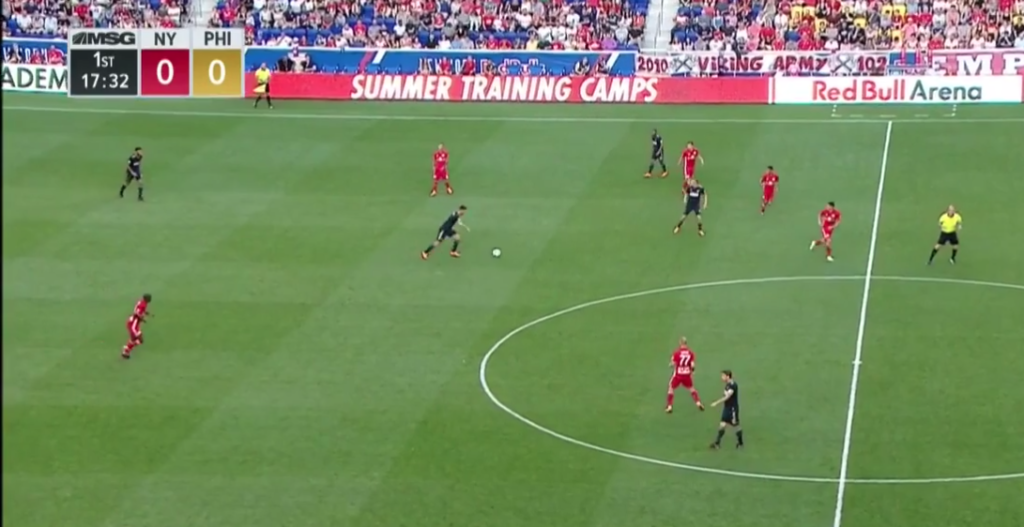
The Union break the press, Medujnanin is all alone
Two cents
1. For weeks, Union fans heard about the xG statistic and how, if the team had simply finished the shots they’d have statistically been expected to finish given the chances they’d taken in 2018, their record would be 5-6 points higher than it was. There’s a saying about horseshoes and hand grenades that might have applied, but the fact of the matter was this:
The Union couldn’t score for large parts of the first third of the season, and often looked bad while doing it. Last night, the latter was the case again but the former could not have been farther from the truth. Philadelphia outplayed one of the two or three best teams in the league in their own building and, had this 29th minute breakaway resulted in a goal, wouldn’t have to lament the next of these pennies of perception (or anything at all, for that matter).
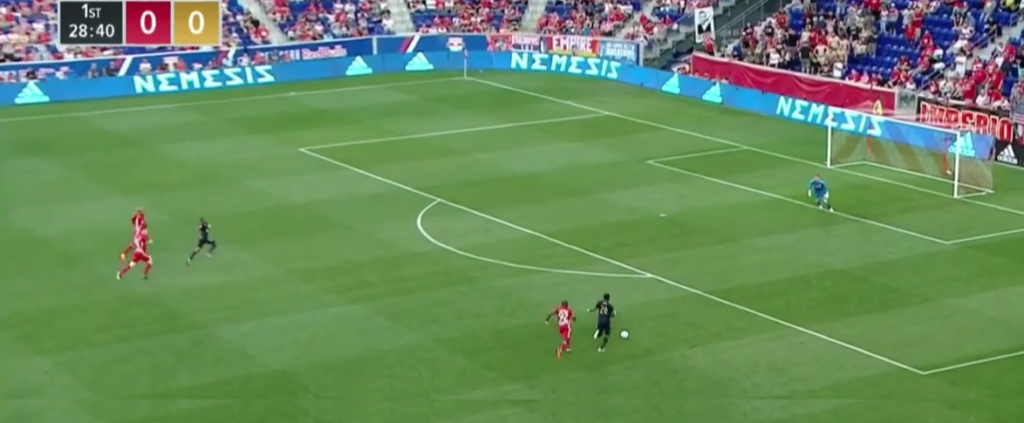
2. C.J. Sapong needs a break. Though he stands tall above his teammates as the most mindful and meditative Boy in Union Blue, as evidenced by this tweet among similar hundreds:
You can only reach out as far as your arms can go. Accept it.
— CJ Sapong (@BigAfrika88) May 21, 2018
…His mind has wandered, his focus waned, his chi is not harnessed, and his Feng’s not Shui-ed. Give the man a rest, let Cory Burke have a crack at the Chicago Fire. For his sake and the sake of the many thousand Union faithful.
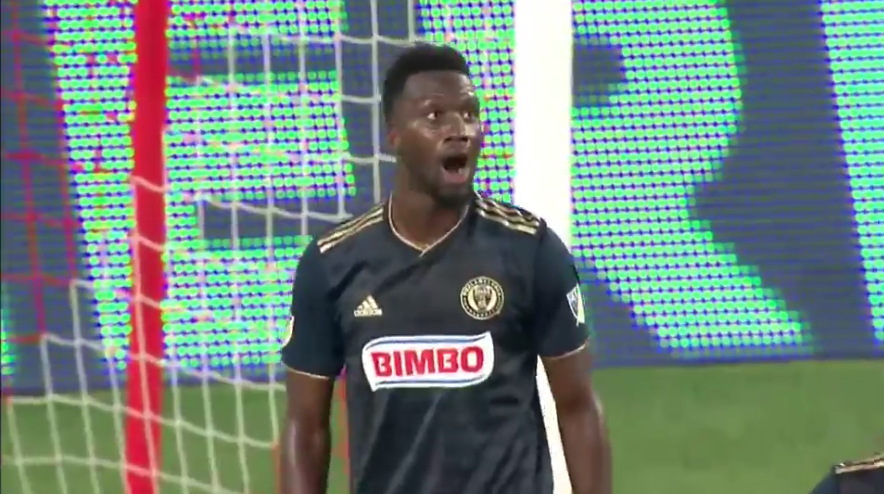
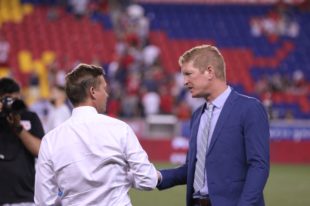

Enjoyable read, Chris, thank you.
.
It takes courage to step in the footsteps of a revered predecessor.
.
Full marks.
That’s more than I could have hoped for, OSC, thank you.
When the Union get good results the comment section is a much duller affair. My own two cents: Ilsinho is clearly encouraging Epps in training to take risks and be selfish. So far, honestly, I think it’s paying off. Hopefully we continue seeing Epps in the XI. As for the CJ and Accam problem? Oy veh, what’s to be done? Burke is an amateur but has tenacity. Accam was a proven goal scorer at some point in his career but isn’t a hold-up striker. I personally would rather see Accam up top playing a different style of striker than rely on Burke. I think the former is snakebitten but the latter is too raw to be relied upon. I’d really like to see a front three of Fafa, Accam, Epps. With all three criss-crossing through defensive lines a good look at goal has to come. I’m desperate to believe Accam just needs a couple goals to regain form.
How is Burke an amateur? We have looked the best when he’s in the game. Dude plays hungry and with an edge. His movement is exponentially better than Sapongs. The dude deserves to start over Sapong and Accam based on this year. And this year should be all that matters.